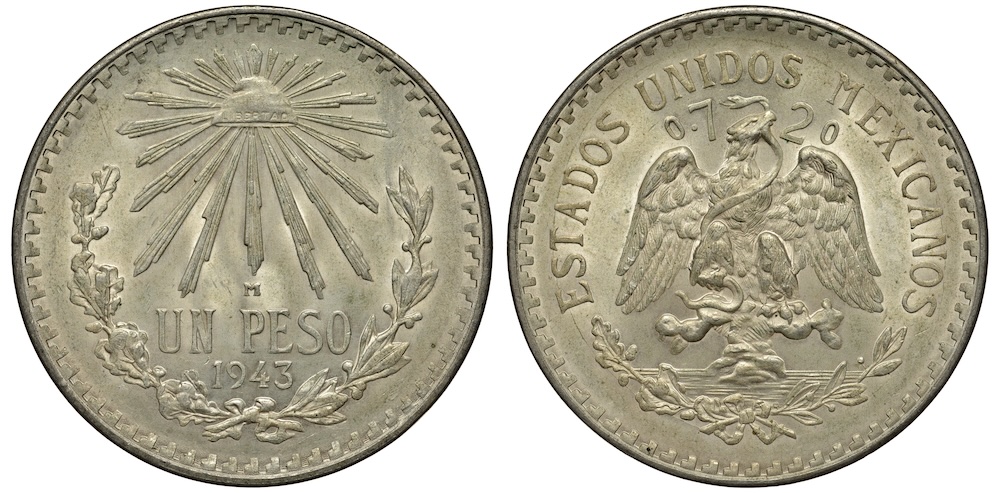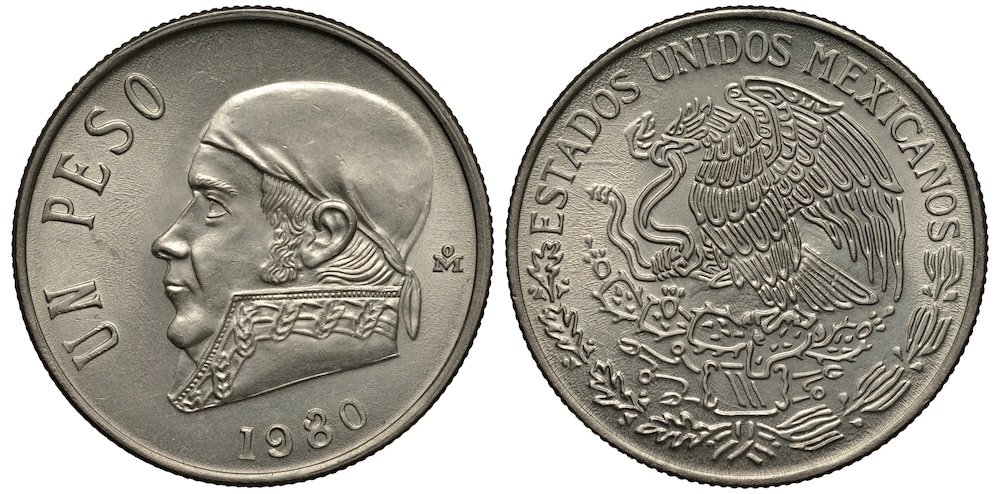The Mexican Silver Peso is one of the most significant coins in the history of numismatics. Its legacy dates back to the Spanish colonial era, evolving into a symbol of Mexican heritage and economic importance. Known for its intricate designs and silver content, the Silver Peso has served as currency and a reflection of Mexico’s rich history and cultural identity. This blog post explores the history of the Silver Peso, the notable figures depicted on the coins, and provides detailed specifications of the various issues.
Historical Background
The origins of the Mexican Silver Peso can be traced back to the Spanish Piece of Eight (or Spanish dollar), which was widely circulated during colonial times. After gaining independence in 1821, Mexico adopted its currency system, and the Silver Peso became a key component of the national economy.

From the 19th through the mid-20th century, various denominations and designs of the Silver Peso were in circualtion. Its high silver content made it a valuable medium of exchange domestically and internationally. The Peso became so trusted that it became the benchmark for trade in Asia and Europe.
However, economic fluctuations and the move to fiat currency in the late 20th century led to the gradual decline of silver in circulation coins. Silver was debased from general coinage by the 1970s, but the historical significance of the Silver Peso remains.
Notable Figures Featured on Silver Pesos
Over the years, Mexican Silver Pesos have featured a range of important historical figures, each chosen for their contributions to Mexico’s identity and independence.
For additional insights into the designs and cultural significance of the Silver Peso, resources such as numismatic catalogs and institutions like the Museo Numismático Nacional and Museo de Numismátio provide valuable information. This blog post explores the history of the Silver Peso, the notable figures depicted on the coins, and provides detailed specifications of the various issues.
Below is a look at some of these individuals:
Miguel Hidalgo y Costilla (1810s)
Miguel Hidalgo, the “Father of Mexican Independence,” is one of the most prominent figures in Mexican history. His image appears on many Silver Pesos as a tribute to his leadership during the fight for independence from Spain. Known for delivering the famous “Grito de Dolores,” Hidalgo’s legacy symbolizes liberty and justice.
Benito Juárez (1806-1872)
Juárez, Mexico’s first indigenous president, is celebrated for his efforts to modernize the country and resist foreign intervention. His appearance on Silver Pesos highlights his commitment to constitutional governance and equality, making him a beloved figure in Mexican history.
Josefa Ortiz de Domínguez (1773-1829)
Josefa Ortiz de Domínguez, also known as “La Corregidora,” was a key conspirator in the Mexican War of Independence. Her role in alerting the revolutionaries of imminent Spanish repression earned her a place of honor.
Emiliano Zapata (1879-1919)
Zapata, a revolutionary leader during the Mexican Revolution, symbolizes the fight for land reform and social justice. His image reflects Mexico’s commitment to addressing inequality and recognizing the struggles of the working class.
Venustiano Carranza (1859-1920)
As a key figure in drafting the 1917 Mexican Constitution, Carranza represents the country’s modern governance. Coins bearing his likeness pay homage to his efforts in shaping contemporary Mexico.
Silver Pesos Design and Artistic Features

The designs of Mexican Silver Pesos have evolved, reflecting the cultural and historical contexts of their minting. Common motifs include:
- The Mexican Coat of Arms: Depicting an eagle perched on a cactus with a serpent in its beak, this design symbolizes Mexico’s Aztec heritage and resilience.
- Liberty Cap and Rays: Found on earlier issues, these designs symbolize freedom and enlightenment.
- Ornamental Patterns: Detailed edging and intricate patterns add aesthetic value and serve as anti-counterfeiting measures.
Mexican Silver Pesos Specifications
Below is a table summarizing key details of Mexican Silver Pesos across various years:
| Year | Silver Composition | Weight (g) | Diameter (mm) |
|---|---|---|---|
| 1869-1905 | 90.3% | 27.07 | 37 |
| 1918-1921 | 80.0% | 16.66 | 34.5 |
| 1920-1945 | 72.0% | 14.00 | 32 |
| 1957-1967 | 10.0% | 16.00 | 34.5 |
| Commemorative | 99.9% | Varies | Varies |
This table demonstrates the transition of silver content over time, reflecting economic changes and the increasing rarity of high-silver-content coins.
Mexican Pesos Collectibility and Legacy
The Mexican Silver Peso remains a favorite among numismatists due to its historical significance and artistic designs. Collectors value these coins for their cultural symbolism, historical connections, and intrinsic silver content. Key dates and rarities command premium prices, particularly those from limited mintages or special issues.
Conclusion
The Mexican Silver Peso is more than just a coin; it is a tangible representation of Mexico’s rich history, cultural identity, and economic development. From its origins as a trusted international currency to its role as a collector’s item, the Silver Peso captivates those interested in numismatics and history. Its designs and featured figures provide a window into the values and milestones of Mexican society, ensuring its legacy endures for generations.







